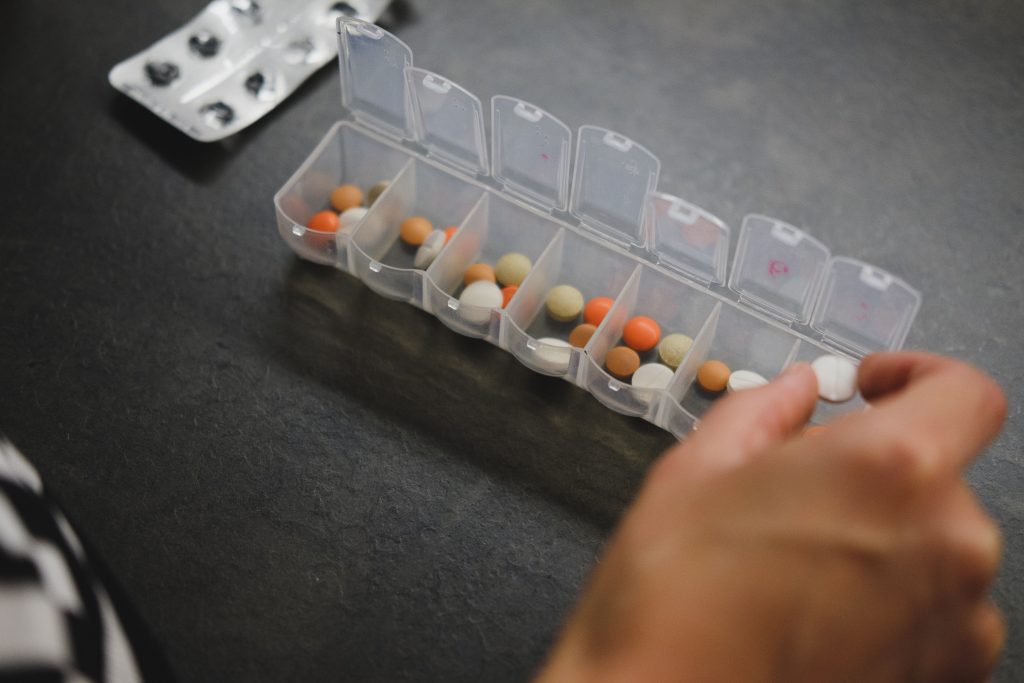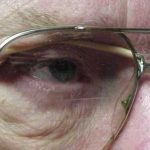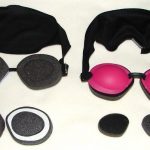Botulinum Toxin Injections
Botulinum toxin is an approved treatment for blepharospasm and hemifacial spasm in the United States and Canada. This is a toxin produced by the bacteria Clostridium botulinum. It weakens the muscles by blocking nerve impulses transmitted from the nerve endings of the muscles. When it is used to treat blepharospasm, minute doses of botulinum toxin are injected intramuscularly into several sites above and below the eyes. The sites of the injection will vary slightly from patient to patient and according to physician preference. They are usually given on the eyelid, the brow, and the muscles under the lower lid. The injections are carried out with a very fine needle. Benefits begin in 1 – 14 days after the treatment and last for an average of three to four months. Long-term follow-up studies have shown it to be a very safe and effective treatment, with up to 90 percent of patients obtaining almost complete relief of their blepharospasm. Side effects include drooping of the eyelid (ptosis), blurred vision, and double vision (diplopia). Tearing may occur. All are transient and recover spontaneously. Repeated treatments remain effective over a long period of time.
Patients and physicians should familiarize themselves with the most current Contraindications, Warnings, Precautions, and Adverse Effects on the product inserts and the manufacturers’ sites. One point particularly worth noting is that botulinum toxin may be contraindicated for patients with any type of condition that causes muscle weakness.
*Currently, the only botulinum toxins approved by the FDA for therapeutic treatment of blepharospasm are Botox® manufactured by Allergan Pharmaceuticals and Xeomin® manufactured by Merz Pharmaceuticals. However, two other botulinum toxins available in the United States are widely used in other countries: Dysport® manufactured by Ipsen Pharmaceuticals and Myobloc® manufactured by Solstice Neurosciences, a subsidiary of US WorldMeds, LLC.
Some doctors in the US will occasionally use Dysport, and less frequently Myobloc, for therapeutic treatment of blepharospasm. The use of Dysport or Myobloc for blepharospasm in the US is called “off-label” usage. The designation of “off-label” means the use of a drug for purposes other than that for which it has been specifically approved. This off-label usage may or may not have ramifications regarding insurance coverage.
- Financial Assistance for Botulinum Toxin Injections
- To B or To A – That is the Question – Soparkar – 2002
- Prolonging the Duration of Effectiveness of Botulinum Toxin Injections – Harrison – 2010
- Pain Relief with Botox® Injections? – Harrison – 2010
- Botulinum Neurotoxin – Your Questions Answered, Injection Techniques with Botulinum Toxin in the Treatment of Blepharospasm – Stacy – 2006
- The Effect of Diet on Botulinum Toxin Treatments – Soparkar – 2010
- Treatment of BEB and Oromandibular Dystonia with Botulinum Toxin – Hassell & Charles – 2020
- Botox Information from the Manufacturer
- Dysport Information from the Manufacturer
- Myobloc Information from the Manufacturer
- Xeomin Information from the Manufacturer
- Diagnosis & Treatment of BEB with Botox
- Treatment: BEB & Oromandibular Dystonia
- What’s New in Botulinum Toxins?
- Medical Uses of Botulinum Toxins
Oral Medications
Oral medications have not been adequately evaluated in clinical trials for safety and efficacy in blepharospasm, and are not frequently used as a primary treatment. Some, but not all, patients get some form of relief from certain medications.
- Blepharospasm – Oral Medication – Comella 2010
- Oral Medications for Treatment of Blepharospasm and Other Cranial Dystonias – LeDoux – 2011
- Pharmacologic Treatment of Blepharospasm – Ondo – 2019
- Oral Meds for BEB – Ondo – 2019
- Non-Invasive Treatment – Rao – 2015
- Cannabidiol as an Adjunct to Botulinum Toxin in Blepharospasm- A Randomized Pilot Study- Silkiss, Koppinger, Truong, Gibson, Tyler- 2023

Surgery
Before surgery is recommended, patients are advised to try safe, potentially efficacious, nonsurgical therapy such as botulinum toxin injections. Functionally impaired patients with blepharospasm who have not tolerated or responded well to medication or botulinum toxin are candidates for surgical therapy. At present, protractor myectomy (removal of some or all of the muscles responsible for eyelid closure) has proven to be the most effective surgical treatment for blepharospasm. Current experience has found that myectomy has improved visual disability in the majority of cases of blepharospasm.
Surgical Myectomy for Blepharospasm
– Yen 2019
Myectomy Before and After Pictures
WARNING: The following videos contain graphic imagery of surgery being performed.
Surgical Myectomy for BEB – Yen – 2019
Upper Eyelid Myectomy – Anderson – 2014
Deep Brain Stimulation
Deep Brain Stimulation (DBS) is essentially a pacemaker for the brain. Electrodes are implanted deep into the part of the brain called the Globus Pallidus internus (GPi), which controls movement. A pulse generator, or battery, is implanted below the clavicle, with connecting wires which are tunneled under the skin and connected to the electrodes in the brain, sending brief electrical pulses to the GPi, thereby interrupting the brain’s chaotic signals.
DBS has been in use since the 1980s for Parkinson’s Disease and Essential Tremor, and in 2003 was FDA approved for Primary Dystonia under a Humanitarian Device Exemption. DBS is becoming a standard of care in movement disorders and is covered by most insurances as well as Medicare. The efficacy of DBS is still highly debated for blepharospasm, but as researchers discover more about the different specific areas of the GPi and the brain in general, it may become more standardized as a blepharospasm treatment.
Non-Surgical Aids
Other options to help manage your blepharospasm:
Ptosis crutches — Supports added to the top, the backside of eyeglasses, and they serve to lift the eyelid and help keep it open. Ask your optician if they can fit your glasses with these crutches. Also, a google search for “ptosis crutches for eyeglasses” will provide the names of numerous optical businesses that can install ptosis crutches.
Protective Goggles — These are goggles for nighttime use when one is having a dry eye problem. They come in various colors and are a comfortable goggle to wear at night whether you are sleeping on your back or side. The plastic molded goggle is lined with a thick, soft foam that has removable foam inserts that are to be moistened with water to add extra humidity while you are sleeping. They have an adjustable stretchy cloth band that goes around your head to hold the goggle in place. They fit snugly around the eyes but not tightly. Everything is washable…the foam inserts should be washed every morning after use and left to air dry.
FL-41 Glasses — Here is an example:
Axon Optics Light Sensitivity Glasses — Photophobia (or light sensitivity) is a “prominent complaint in patients with blepharospasm,” for whom light may be uncomfortable and actually bring on eyelid spasms.
Research shows that precision-tinted lenses (often called FL-41) which are designed to filter out bothersome light wavelengths could reduce light sensitivity and blink frequency, thus reducing the effects of blepharospasm:
– 20% average reduction in blink frequency
– Reduced frequency and severity in blepharospasm
Axon Optics has developed improved FL-41 tinted lenses, which filter out more of the bothersome light and allow more of the soothing light in.
In a clinically-validated survey of more than 1,000 users of Axon Optics lenses, the findings revealed:
– 85% of users experienced decreased light sensitivity
– Among those, 40% average decrease in light sensitivity impact
For those whose symptoms of blepharospasm are related to light sensitivity, Axon Optics lenses could be a useful tool. The glasses come in both indoor and outdoor versions, and have a 60-day return policy.
Blepharospasm Glasses: Can Special Glasses Reduce My Symptoms










